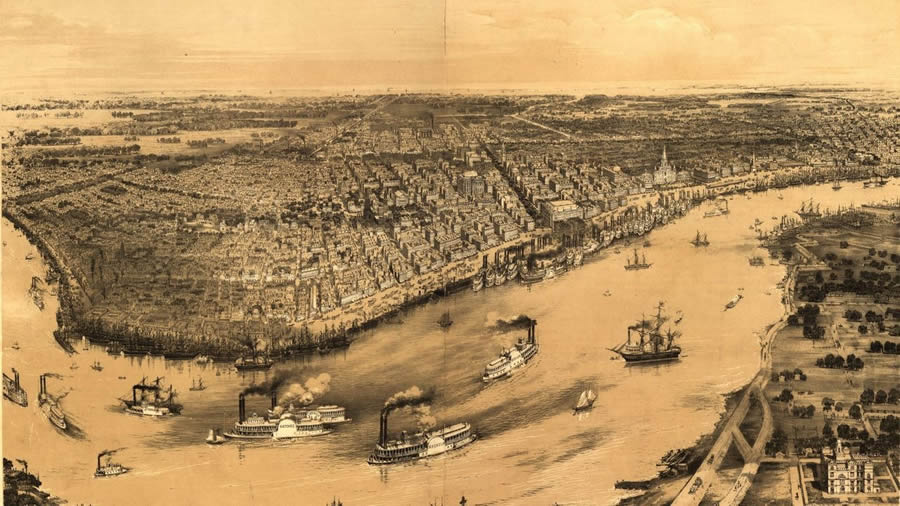Comes to Call
| People | Places | Plots |
A Brief History of New Orleans in the early 19th Century and the Panic of 1837
The population of the city doubled in the 1830s with an influx of settlers. French-speakers remained a majority of the white population until almost 1830. Large numbers of German and Irish immigrants began arriving at this time. The population of the city doubled in the 1830s to approximately 102,000 and by 1840 New Orleans had become the wealthiest and third-most populous city in the nation.

The introduction of natural gas for lighting, started in 1830; the building of the Pontchartrain Rail-Road (1830-31), one of the earliest in the United States; the introduction of the first steam-powered cotton press (1832), and the beginning of the public school system (1840) marked these busy years. Foreign exports more than doubled in the period 1831-1833. In 1838 the commercially-important New Basin Canal opened a shipping route from the Lake to uptown New Orleans. Travelers in this decade have left pictures of the animation of the river trade -- more congested in those days of river boats, steamers, and ocean-sailing craft than today. The institution of slavery, the quadroon balls, the medley of Latin tongues, the disorder and carousing of the river-men and gamblers filled the city with a bustling sense of adventure and intrigue. Altogether there was much of the wildness of a frontier town, and a seemingly boundless promise of prosperity. The financial crisis of 1837 was severely felt by some, but did not greatly retard the city's overall advancement.
In 1836 the city was divided into three municipalities: the first being the French Quarter and Faubourg Treme, the second being Uptown (then meaning all settled areas upriver from Canal Street), and the third being Downtown (the rest of the city from Esplanade Avenue on, downriver). During this time, the three Municipalities were essentially governed as separate cities, with the office of Mayor of New Orleans having only a minor role in facilitating discussions between municipal governments.
The importance of New Orleans as a commercial center was reinforced when the United States Federal Government established a branch of the United States Mint there in 1838. Although there was an existing coin shortage, the situation became much worse because in 1836 President Andrew Jackson had issued an executive order, called a specie circular, which demanded that all land transactions in the United States be conducted in cash, thus increasing the need for minted money. In contrast to the other two Southern branch mints, which only minted gold coins, the New Orleans Mint produced both gold and silver coinage, which perhaps marked it as the most important branch mint in the country.

The Panic of 1837 was a financial crisis in the United States that touched off a major recession that lasted until the mid-1840s. Profits, prices, and wages went down while unemployment went up. Pessimism abounded during the time. The panic had both domestic and foreign origins. Speculative lending practices in western states, a sharp decline in cotton prices, a collapsing land bubble, international specie flows, and restrictive lending policies in Great Britain were all to blame.
On May 10, 1837, banks in New York City suspended specie payments, meaning that they would no longer redeem commercial paper in gold coins at full face value. Banks collapsed, businesses failed, prices declined, and thousands of workers lost their jobs. Despite a brief recovery in 1838, the recession persisted for approximately seven years. Unemployment may have been as high as 25% in some locales.